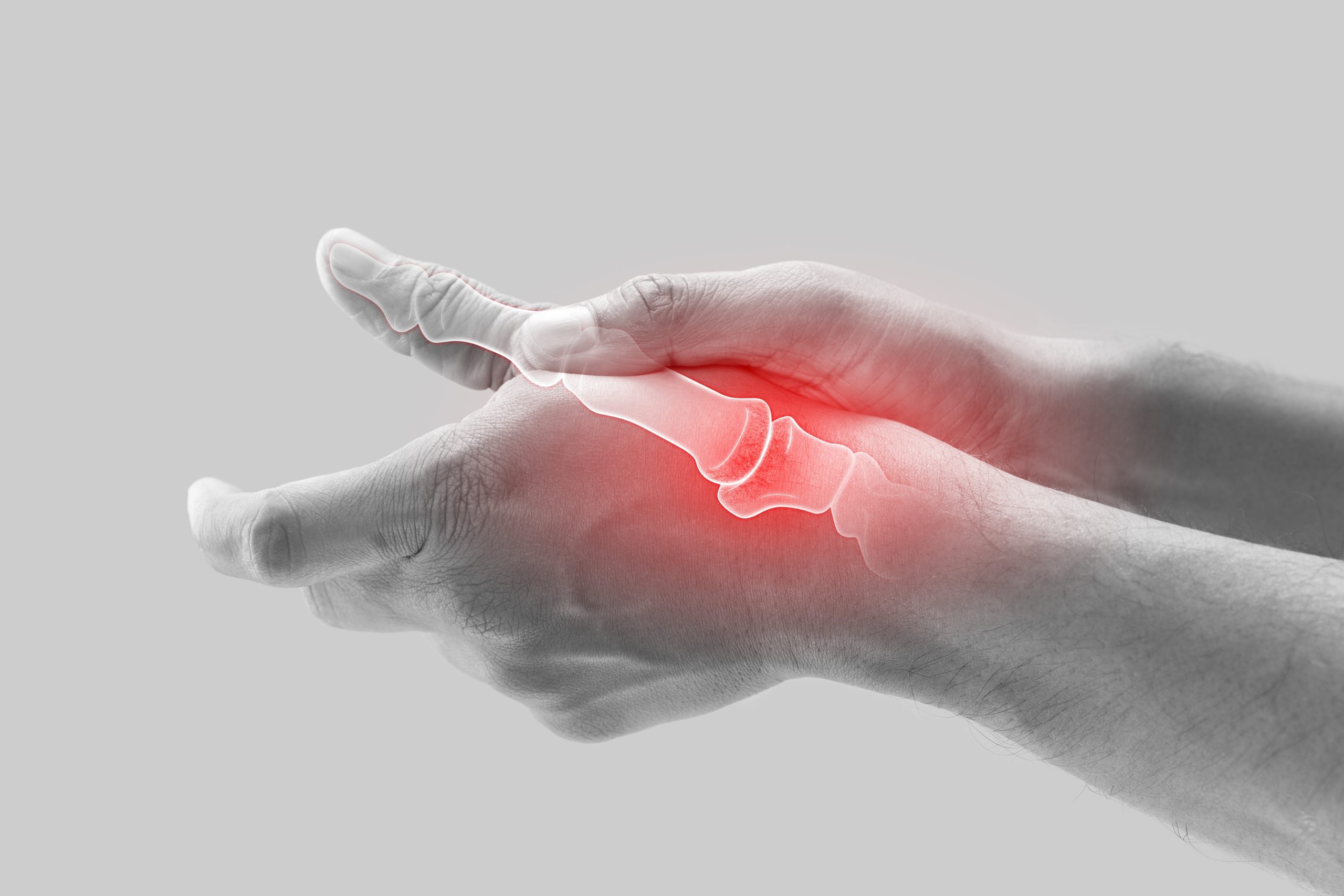
Understanding basal thumb osteoarthritis
Osteoarthritis is a common form of arthritis that affects millions of people in the UK. It can affect a range of bones in the body but tends to affect bones at key joint locations most heavily. As a result, osteoarthritis in the hand is very common due to the number of the bones and the frequent use that these joints see. This article discusses the main points around basal thumb osteoarthritis, including possible complications and treatment options.
What are the symptoms of thumb osteoarthritis?
The basal thumb joint is located where the bottom metacarpal bone of the thumb meets the trapezium bone in the wrist. This joint is vital for the use of the thumb as it’s involved in any movement of the digit. Osteoarthritis affecting the basal thumb joint can manifest in any of the following symptoms:
- Diminished ability to twist, bend, grip, or pinch using the thumb.
- Pain and swelling localised to the thumb and the surrounding area.
- Loss of strength and movement that extends to the wrist.
- In extreme cases, a bump at the base of the thumb caused by hyperextension of the MCP joint.
What causes basal thumb osteoarthritis?
At the time of writing, there is not a consensus on what causes arthritis in all its forms. However, there are a number of factors which are recognised as being contributary to the development and worsening of the condition. For osteoarthritis that affects the base of the thumb, this includes:
- Patient age.
- Height and weight (body mass index).
- Jobs and hobbies (repetitive stress).
- Certain metabolic diseases.
- Biological sex.
- Recent injuries or those with lasting repercussions.
Healthcare professionals should consider these factors when assessing whether a patient’s symptoms could be linked to osteoarthritis. This is also necessary to judge the severity of the condition and schedule appropriate treatments. Depending on the person, certain treatments could carry significantly more risk than they would otherwise. One of the most impactful effects of osteoarthritis is that it can be reduce bone stock and weaken joints. This leaves the patient more susceptible to bone injuries such as fractures, which can make it difficult to conduct osteotomies.
Treatment options for basal thumb osteoarthritis
As we’ve established, osteoarthritis in the thumb can cause significant disruption to someone’s everyday life due to the range of tasks we use our thumbs to complete on a daily basis. The following treatments are some of the options available to combat the effects of osteoarthritis in the thumb.
MAÏA Carpometacarpal Prosthesis
Joint replacement surgery can produce long lasting positive outcomes for patients. Through the removal of some or all of the thumb joint, an artificial implant can be inserted to restore motion and stabilise the thumb at the base. The MAÏA prosthesis from Group Lépine consists of a trapezial cup, offset neck, and metacarpal stem. Its dual mobility design is effective at reducing the chance of dislocation and ensuring stability. This system also comes with modern cannulated instrumentation to aid in surgical application.
Arthrodesis
Pain can be relieved by fusing joints in the thumb together. This can be achieved through the precise shaping of the trapezium and the hollowing of the metacarpal bone. Once the bone ends fit flush against each other, metal pins are used to hold the bones in place and allow them to knit together. It should be noted that this has the potential to be a lengthy open surgical procedure and so carries a relatively high complication rate. Although expertise and the use of leading arthrodesis screw and nail technology can reduce risk.
Movement restrictions
Efforts to limit movement and maintain positioning of the thumb can allow joints to repair themselves. A common way to do this, whilst also providing support and protection to the joint, is through the use of a hand or wrist splint. Although a medical professional may have to set the bones in the correct position first. They can also recommend exercises to help strengthen joints and improve function.
However, this treatment option may not be viable for every instance of osteoarthritis. For instance, a complex fracture could prevent blood flow from reaching the basal thumb joint thereby not allowing the bones to heal and making a splint an ineffective treatment.
Your UK orthopaedic distributor
If you’re looking for a trusted third party to supply your clinic or hospital with arthritis implants, LEDA Orthopaedics can help. Our company is in collaboration with leading global suppliers of specialist orthopaedic implants for the treatment of osteoarthritis. Contact us and a member of our team will be happy to discuss how your needs in healthcare provision can be met.